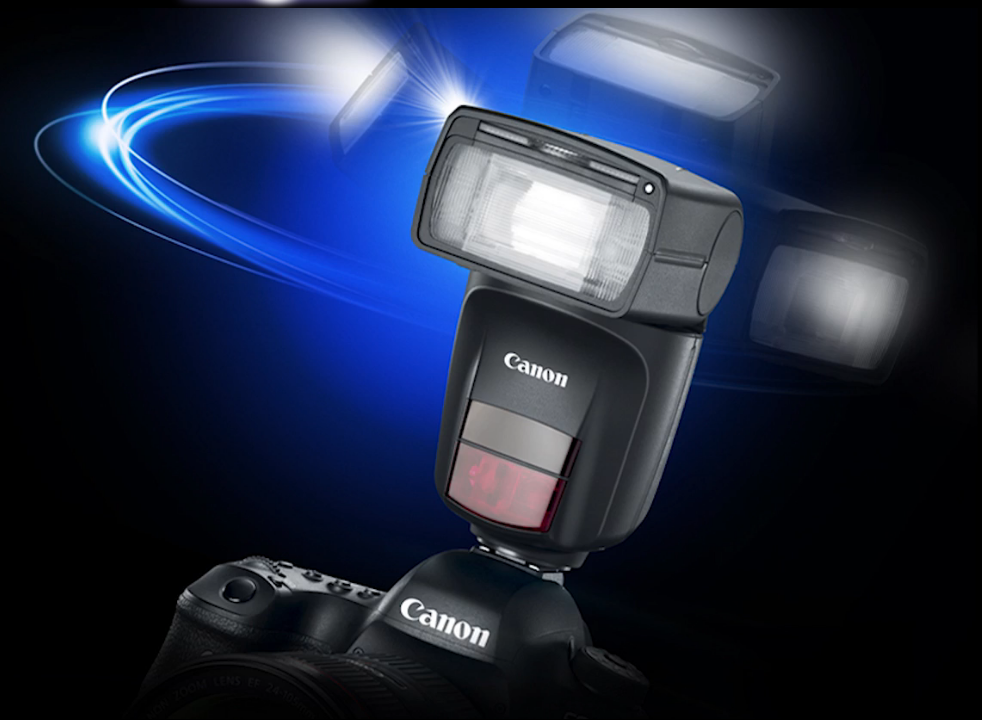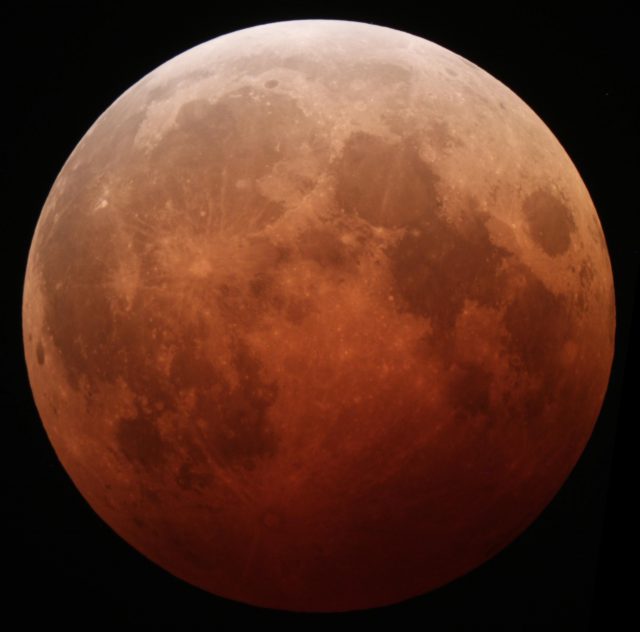Macro lenses are specialized lenses that are designed to capture close-up images of small objects. These lenses are capable of capturing intricate details of subjects like flowers, insects, and other small objects that are not visible to the naked eye.
In this essay, we will discuss the definition of macro lenses, and their differences from other lens types, explain the magnification ratio, and explore their various usages. Finally, we will provide a list of our recommended lenses for both full-frame and cropped Sony cameras.
What is a macro lens?
A macro lens is a type of lens that is specifically designed for close-up photography. These lenses are capable of focusing on subjects at a very close range, usually less than 12 inches. Macro lenses have a high level of optical quality and are designed to produce sharp, detailed images with accurate color reproduction. They are often used in scientific and medical applications where capturing fine details is critical.
Macro lenses are also popular among nature photographers who want to capture detailed images of flowers, insects, and other small subjects. They can also be used in product photography to capture intricate details of small items like jewelry and electronics.

Photo by Depositphotos
Why most macro lenses are prime?
Most macro lenses are prime lenses because they are designed to achieve high magnification ratios and produce sharp images with minimal distortion, which is easier to achieve with a fixed focal length. The construction of a zoom lens, which requires moving multiple lens elements, can introduce additional challenges to achieving sharpness and avoiding distortion.
While there have been attempts at making zoom macro lenses, they are relatively rare and typically not as popular as prime macro lenses. One reason is that the construction of a zoom macro lens typically involves a complex optical design, which can lead to significant distortion and other optical issues. Additionally, a zoom macro lens may not be able to achieve the same level of magnification as a prime macro lens.
That said, there are some zoom lenses that offer close-up focusing capabilities, such as the Tamron 70-180mm f/2.8 Di III VXD, which has a close focusing distance of 0.85m and a maximum magnification ratio of 0.5x. However, these lenses are not typically considered true macro lenses, which are defined as lenses with a maximum magnification ratio of at least 1:1.

Photo by Depositphotos
Differences between macro and regular lens
- The Magnification ratio:
One of the main differences between macro lenses and other lens types is the magnification ratio. The magnification ratio is the ratio of the size of the subject on the camera sensor to its actual size.
Macro lenses have a magnification ratio of 1:1 or greater, it is also called “life-size” or “standard”, which means that the subject on the sensor is the same size as the actual subject.
In contrast, regular lenses have a magnification ratio of less than 1:1, which means that the subject on the sensor is smaller than the actual subject. Such lenses have a short focusing distance, allowing them to focus on objects that are several inches away.
-
Minimum focusing distance
Regular lenses have a minimum focusing distance of at least a foot or more and do not have a 1:1 magnification ratio, resulting in smaller images on the camera’s sensor.
While the macro lens has a minimum focusing distance that enables capturing a 1:1 magnification ratio by getting sufficiently close to the subject.
- Field curvature
In addition, Regular lenses typically suffer from field curvature, so the point of focus will be at a slightly different distance toward the corners of the frame compared to the center. But all macro lenses have an important feature which is that they’re flat field lenses. So if you are shooting a flat subject, you will have it all in focus.
Finally, Macro lenses also have a narrower field of view than regular lenses, which makes it easier to isolate the subject and create a shallow depth of field.

Photo by Depositphotos

Photo by Depositphotos
The Best Sony Macro Lens
I- Full-frame camera lenses
- Sony 50mm f/2.8 FE Macro
- Sigma 70mm f/2.8 DG Macro Art
- Sony 90mm f/2.8 Macro G OSS
- Sigma 105mm f/2.8 Art DG DN Macro Art
- Laowa 100mm f/2.8 2X Ultra Macro APO
- Rokinon 100mm F2.8 ED UMC
II- Cropped sensor camera lenses
- Sony E 30mm f/3.5 Macro
- ZEISS Touit 50mm f/2.8M Macro
- Venus Optics Laowa 65mm f/2.8 2X Ultra Macro APO
I- Full-frame camera lenses
Sony 50mm f/2.8 FE Macro
Key Features
- E-Mount Lens/Full-Frame Format
- Aperture Range: f/2.8 to f/16
- 1:1 Magnification Ratio
- One ED Element & One Aspherical Element
- Focus Hold Button & Focus Range Limiter
- Minimum Focus Distance: 6.3″
- Dust- & Moisture-Resistant Construction
- Rounded 7-Blade Diaphragm
The Sony 50mm f/2.8 FE Macro lens is a high-quality macro lens designed for Sony’s full-frame E-mount cameras. This lens is known for its sharpness, accurate colors, and smooth bokeh. It has a minimum focusing distance of 6.3 inches (16cm) and a maximum magnification ratio of 1:1, allowing you to capture fine details of small subjects such as insects, flowers, and jewelry.
The lens also features a built-in Optical SteadyShot image stabilization system, which helps reduce camera shake and allows you to capture sharp images at slower shutter speeds. The lens is lightweight and compact, making it easy to carry around and use in the field.
Sigma 70mm f/2.8 DG Macro Art
Key Features
- E-Mount Lens/Full-Frame Format
- Aperture Range: f/2.8 to f/22
- Two FLD Elements, Two SLD Elements
- Low Dispersion and Aspherical Elements
- Super Multi-Layer Coating
- 1:1 Magnification, 10.2″ Min. Focus
- Coreless DC AF Motor, Manual Override
- Weather-Sealed, Brass Bayonet Mount
- Rounded 9-Blade Diaphragm
The Sigma 70mm f/2.8 DG Macro Art is a lens designed for macro photography, offering true 1:1 reproduction and a dust- and splash-proof design. The lens is part of Sigma’s Art-series line of lenses and features sharp optics, though some reviews have noted that autofocus can be slow.
The lens has a focus ring that is tuned to the needs of macro shooting and provides full-time manual focus even in autofocus shooting, Reviewers have praised the lens for its impressive image quality, noting that it delivers well-made, solid macro shots, Overall, the Sigma 70mm f/2.8 DG Macro Art is a versatile and well-made lens that delivers high-quality macro shots, though autofocus may be slower than some other lenses in its class.
Sony 90mm f/2.8 Macro G OSS
Key Features
- E-Mount Lens/Full-Frame Format
- Aperture Range: f/2.8 to f/22
- 1:1 Magnification Ratio; Internal Focus
- Minimum Focus Distance: 11″
- Aspherical, ED, and Super ED Elements
- Nano AR Coating
- Direct Drive Super Sonic Wave AF Motor
- Optical SteadyShot Image Stabilization
- Sliding Focus Ring for AF/MF Selection
- Focus Hold Button; Focus Range Limiter
The Sony FE 90mm f/2.8 Macro G OSS is a mid-telephoto macro lens designed specifically for use on Sony’s E-mount mirrorless cameras. It features built-in Optical SteadyShot (OSS) image stabilization, allowing for pin-sharp images even when shooting handheld at up to 1:1 magnification.
The lens has a push-pull AF/MF switching system and an AF lock button, making it easy to use and handle. Reviews of the lens have noted that it is a user-friendly macro lens, producing very sharp images with very little field curvature. The lens also produces a soft Bokeh and has almost no color aberrations.
Overall, the Sony FE 90mm f/2.8 Macro G OSS is a very good macro lens that can also be used as a light telephoto, delivering sharp and detailed macro shots with ease of use and image stabilization.
Sigma 105mm f/2.8 Art DG DN Macro Art
Key Features
- Full-Frame | f/2.8 to f/22
- 1:1 Magnification, 11.6″ Min. Focus
- Hyper-Sonic Motor AF System
- Custom AFL Button, Focus Limiter Switch
- Physical Aperture Ring; De-Click Switch
- Weather-Sealed Design
The Sigma 105mm f/2.8 Art DG DN Macro Art is a high-quality macro lens designed for mirrorless cameras with full-frame sensors. It’s part of Sigma’s Art line, which is known for its excellent image quality and build quality.
The lens features a maximum aperture of f/2.8, which makes it suitable for low-light photography and creating a shallow depth of field. It also has a 1:1 magnification ratio, which allows you to capture highly detailed images of small subjects such as insects, flowers, and textures.
The lens uses a 9-blade diaphragm, which creates a smooth bokeh or background blur in your images. It also has a customizable AFL button that can be used to lock focus or activate other functions, depending on your camera’s settings.
The Sigma 105mm f/2.8 Art DG DN Macro Art uses a combination of special low dispersion (SLD) and aspherical elements in its design, which helps to reduce chromatic aberration and distortion. It also has a Super Multi-Layer Coating that minimizes flare and ghosting while increasing contrast and color fidelity.
The lens has a robust build quality with a metal exterior, weather-sealing, and a focus limiter switch that allows you to limit the focus range for faster autofocus performance. It also comes with a removable tripod collar for added stability when shooting at close distances.
Overall, the Sigma 105mm f/2.8 Art DG DN Macro Art is a versatile and high-performing lens that is ideal for macro photography, as well as portrait, landscape, and other types of photography.
Laowa 100mm f/2.8 2X Ultra Macro APO
Key Features
- E-Mount Lens/Full-Frame Format
- Aperture Range: f/2.8 to f/22
- Two Low Dispersion Elements
- Maximum Magnification: 2:1
- Minimum Focusing Distance: 9.7″
- Manual Focus Design
- 13-Blade Diaphragm
The Laowa 100mm f/2.8 2X Ultra Macro APO is a lens designed for macro photography, offering up to a 2:1 magnification ratio. The lens features an apochromatic (APO) design that aims to minimize chromatic aberration and color fringing.
It also features a smooth manual focus ring that is designed to allow for precise focus adjustments when shooting macro shots. The lens has a maximum aperture of f/2.8, which makes it suitable for low-light shooting situations. The lens is also compact and lightweight, making it easy to carry around for macro photography on the go.
Reviewers have praised the lens for its sharpness, color rendition, and bokeh quality, making it a strong choice for macro photography enthusiasts who want a high-quality lens. Additionally, the lens is designed with an internal focusing mechanism, which means that the lens barrel will not extend when focusing, making it easier to shoot at closer distances. Overall, the Laowa 100mm f/2.8 2X Ultra Macro APO is a well-regarded lens among macro photography enthusiasts, offering high-quality optics, precise focusing, and a compact design.
Key Features
- E Mount Lens/Full-Frame Format
- Aperture Range: f/2.8 to f/32
- One High Refractive Index Element
- One Extra-Low Dispersion Element
- Ultra Multi-Coating
- 1:1 Magnification, 1′ Minimum Focus
- Internal Focus; Manual Focus Design
- Non-Rotating Filter Mount
- Rounded 9-Blade Diaphragm
The Rokinon 100mm F2.8 ED UMC is a medium telephoto macro lens that is designed for full-frame and APS-C mirrorless cameras. The lens is well-suited for macro photography, portraits, and other types of photography where a longer focal length is needed.
The lens features an aperture range of f/2.8 to f/32, providing versatility in different lighting conditions and the ability to create a shallow depth of field for selective focus. It also has a 1:1 maximum magnification ratio, which enables you to capture highly detailed images of small subjects.
The lens uses an extra-low dispersion (ED) element to reduce chromatic aberration and increase sharpness and has a multi-layer coating to reduce flare and ghosting. The lens is also constructed with a metal housing and features a durable and precise manual focus system.
The Rokinon 100mm F2.8 ED UMC is a lightweight and compact lens that is easy to carry and handle and is suitable for both novice and professional photographers. Overall, this lens is a good choice for those who want to capture high-quality macro images and portraits at an affordable price point.
II- Cropped sensor camera lenses
Sony E 30mm f/3.5 Macro
The Sony E 30mm f/3.5 Macro lens is designed specifically for Sony’s APS-C sensor cameras. It is a compact and lightweight lens that offers a 1:1 magnification ratio, making it a great choice for macro photography. The lens has a minimum focusing distance of 9.5cm, allowing you to get up close to your subject and capture fine details.
The lens features a smooth and silent autofocus system, making it ideal for shooting both stills and video. It also has a 7-blade circular aperture for smooth and pleasing bokeh in out-of-focus areas of your images.
The lens construction consists of seven elements in six groups, including one ED (extra-low dispersion) glass element to minimize chromatic aberrations and ensure high image quality. The lens also has a built-in macro illuminator, which provides additional light to your subject to help you capture sharp and well-lit images in low-light conditions.
ZEISS Touit 50mm f/2.8M Macro
Key Features
- E-Mount Lens/APS-C Format
- 75mm (35mm Equivalent)
- Aperture Range: f/2.8 to f/22
- Two Aspherical Elements
- Two Low Dispersion Elements
- Planar Optical Design
- ZEISS T* Anti-Reflective Coating
- 1:1 Magnification, 5.9″ Min. Focus
- Floating Elements System
- DC Autofocus Motor
The Sony E-mount ZEISS Touit 50mm f/2.8M is a 75mm-equivalent prime suitable for both portraitures as well as close-up shooting. As a macro lens, it features a life-size 1:1 maximum magnification ratio and a minimum focusing distance of 5.9″ for working with nearby subjects.
Its advanced Planar optical design includes two aspherical elements and two low dispersion elements, which help to control a variety of aberrations, distortion, and color fringing in order to produce sharp, well-corrected imagery.
A floating elements system is used, too, to maintain consistent image quality throughout the focusing range. Individual elements also receive a ZEISS T* anti-reflective coating to suppress flare and ghosting for greater contrast and color accuracy when working in strong lighting conditions.
Additionally, suiting both photo and video use, this lens incorporates a DC autofocus motor to deliver especially fast, quiet, and precise focusing performance.
Venus Optics Laowa 65mm f/2.8 2X Ultra Macro APO
Key Features
- E-Mount Lens/APS-C Format
- 5mm (35mm Equivalent)
- Aperture Range: f/2.8 to f/22
- Three Extra-Low Dispersion Elements
- Maximum Magnification: 2:1
- Minimum Focusing Distance: 6.7″
- Manual Focus Design; Internal Focus
- 9-Blade Diaphragm
The Venus Optics Laowa 65mm f/2.8 2x Ultra Macro APO Lens is a specialized lens designed for macro photography, specifically for Sony E-mount cameras. With a magnification ratio of 2:1, this lens allows for extreme close-up shots.
The lens features an apochromatic (APO) design that aims to reduce chromatic aberration and color fringing, leading to sharper and more accurate color reproduction.
The lens also has a maximum aperture of f/2.8, allowing for low-light shooting and providing a shallow depth of field, which is useful for isolating subjects from the background.
The Laowa 65mm f/2.8 Ultra Macro APO lens is constructed with 14 elements in 10 groups, including one Extra-Low Dispersion (ED) element, and two aspherical elements. This design helps to minimize distortion and other optical aberrations, resulting in sharper and more accurate images. The lens also features a manual focus design with an extended focus throw, making it easier to achieve precise focus when shooting close-up subjects.
The lens is compact and lightweight, making it easy to carry around for outdoor macro photography. It also features a built-in LED ring light that provides additional illumination for macro photography in low-light conditions. The LED ring light has three brightness levels and can be easily adjusted to suit the needs of the user.
Can’t afford brand-new lenses?
Sometimes, buying a new Lens can be very expensive for many people. However, Keh is a great option to get a used one at reasonable price. Read the full review here.
Related posts
The Macro Lenses Explained – Samples & Recommendations
Venus Optics Probe Lens: 24mm F/14 Review
Macro Photography Tips And Tricks – Guidelines & Examples
Thanks for reading, I hope you enjoyed the article, in case you have any questions just drop them below & I will be happy to answer you.
The featured Photo by Depositphotos
If you enjoy the site, don’t forget to subscribe, we will only inform you when a new article is posted.



















Many thanks for providing such an informative and exhaustive information about the Best Sony Macro Lens. This is actually a very significant post that needs to be read. There is a photographer that I know who does work similar to this. It is very vital to him to have a specific sort of micro lens. This is something that I will most certainly discuss with him. Keep publishing like this.
Thank you for your comment.
I completely agree with the reasons why most macro lenses are prime lenses. Achieving high magnification ratios while maintaining sharpness and minimal distortion is crucial in macro photography, and prime lenses can provide this more effectively than zoom lenses. The ability to focus at a close distance with a 1:1 magnification ratio is also an essential feature that prime macro lenses offer.
Moreover, the fact that macro lenses are flat field lenses is an important advantage that makes them a preferred choice for capturing flat subjects. The ability to have the entire subject in focus, regardless of its location within the frame, is invaluable in macro photography.
Thanks